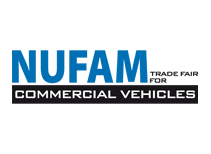Charging infrastructure for electricity and hydrogen: as easy as refuelling
The public network with charging stations for electricity and hydrogen must be significantly expanded by 2025 - the EU's AFIR regulation clearly formulates this. Charging facilities on company premises and private garages continue to play a big role.
Loading and waiting times
The likelihood of having to wait for a free spot before the already lengthy refuelling process during a holiday trip has increased. Only Tesla drivers can relax on extended trips, because this clientele can rely on a well-developed network of so-called Super Chargers. This is all the more astonishing because Tesla finances its charging stations entirely out of its own pocket without subsidies.
The joint charging network Ionity of the long-established car manufacturers, on the other hand, is subsidised with tax money. The money comes from the EU's Connecting Europe Facility for Transport (CEF-T) programme. Ionity is a joint venture of the car manufacturers BMW, Ford, Hyundai, Mercedes and Volkswagen with Audi and Porsche.
Important role of the state
Without subsidies, the industry might have set out even later to build its own charging station network. This clearly shows that the state plays an important role in the development of infrastructures. This applies not only to the allocation of subsidies, but also to the creation of legal framework conditions. In this regard, the EU Parliament followed up on 27 March and set the pace for network expansion in the so-called AFIR Regulation (Alternative Fuels Infrastructure Regulation). The compromise that was fought for stipulates that by 2025 drivers should find charging stations at intervals of 60 kilometres along the most important transport axes in the EU. By 2030, this will apply throughout the entire EU. For trucks and buses, a charging station density at intervals of 120 kilometres will initially suffice.
Two-track
However, the EU regulation also shows that the policy is not single-track. The compromise provides for hydrogen filling stations to be built at intervals of 200 kilometres. However, not only the availability but also the actual use of charging stations will improve. The goal is to make charging electric cars as easy as refuelling a combustion engine. For example, the ad hoc prices at the stations must be uniformly indicated in kilowatt hours or per kilogramme in the future. In addition, drivers should be able to choose whether they want to pay on site with their EC card, contactless or with the help of QR codes.
Charging at home and at the employer
Apart from the public filling station network for electricity and hydrogen, the filling stations installed in company ovens, company car parks and private garages will play a major role. Corresponding solutions for electricity and hydrogen will also be on show at NUFAM. The number of suppliers is growing because the market is attracting large growth rates: Those who can comfortably recharge their cars at home or during working hours will only need the public charging stations on business or holiday trips.

